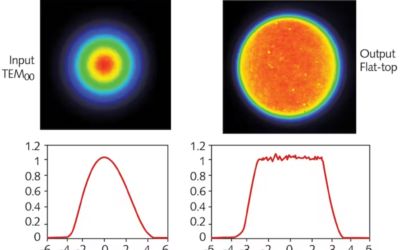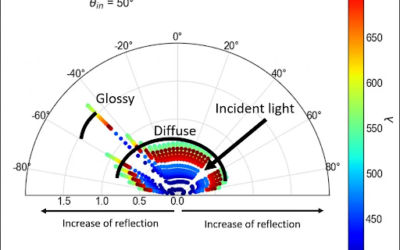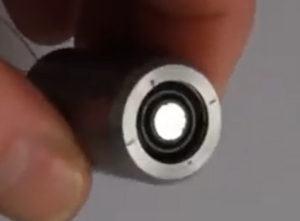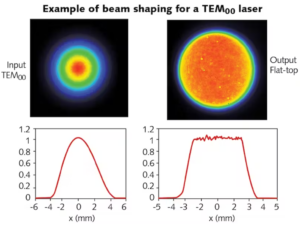Introduction to Beam Exander Design
The essence of numerous laser applications lies in the capacity to control and shape laser beams to meet specific requirements. In previous articles, we discussed the significance of beam splitters, homogenizers, and Powell lenses. Now, our focus shifts to the concept of beam expanders, an important optical element that can manipulate and control a laser beams’ spatial characteristics. In this article, we will delve deeper into the world of beam expanders and their indispensable contributions to the realm of optics.
A beam expander is an optical device designed to increase the diameter of a laser beam while maintaining its collimation, thus decreasing its divergence. This device is essential in a wide range of applications, including laser processing, laser communications, medical laser systems, and astronomical observations. In this document, we will explore the fundamental principles, key components, and considerations involved in the design of beam expanders.
Principles of Beam Expansion
The basic principle of beam expansion relies on a combination of lenses or lens systems to diverge or converge the incoming laser beam. A typical beam expander consists of two lens elements, often referred to as the input or collimating lens and the output or focusing lens. The input lens takes an incoming collimated laser beam and expands it by allowing the beam to diverge. The output lens then focuses the expanded beam back to a collimated state, effectively achieving beam expansion.
Components and Design Considerations
- Lens Selection: The choice of lenses is critical to the performance of the beam expander. Generally, high-quality optical materials like N-BK7 or fused silica are used for minimizing aberrations. Choosing lenses with appropriate focal lengths ensures the desired beam expansion factor is achieved.
- Magnification: The beam expansion factor, often denoted as “M,” is defined as the ratio of the output beam diameter to the input beam diameter. The magnification determines the level of expansion required for a particular application. Larger magnification values result in more substantial beam expansion.
- Beam Divergence: A critical aspect of beam expander design is controlling the divergence of the output beam. Minimizing divergence ensures the beam remains tightly focused over long distances, thus maximizing its efficiency in various applications.
- Aperture Size: The size of the lens apertures must be large enough to accommodate the expanded beam without causing vignetting or loss of light. Properly dimensioning the aperture is crucial in avoiding unnecessary beam clipping.
- Optical Coatings: Antireflection coatings are applied to the lens surfaces to minimize reflections and maximize light transmission. Careful selection of coatings for specific laser wavelengths is essential to achieve optimal performance.
- Thermal Considerations: High-power laser beams can generate significant heat, affecting the performance of the beam expander. Proper thermal management, such as using low-absorption materials and cooling solutions, is necessary to prevent thermal-induced aberrations.
Types of Beam Expanders
Several types of beam expanders are designed to cater to different applications and beam characteristics:
- Keplerian Beam Expander: This type uses two positive lenses and provides a simple and compact design. However, it is not well-suited for applications requiring high expansion ratios due to its limited field of view.
- Galilean Beam Expander: Unlike the Keplerian expander, the Galilean expander employs one positive and one negative lens. It offers larger expansion ratios and a wider field of view but at the expense of a longer physical length.
- Zoom Beam Expander: Zoom beam expanders incorporate movable lenses or lens groups, allowing adjustable magnification and beam divergence. They provide versatility but can be more complex and expensive.
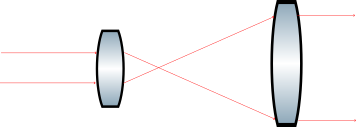
Figure 1. Keplerian Beam Expander. The distance between the two lenses is the sum of their focal lengths.
Applications of Beam Expanders
Beam expanders find widespread application in various fields, including:
- Laser Material Processing: Beam expanders are used to shape and control the laser beam in materials processing applications like laser cutting, welding, and engraving. They enable the beam to cover larger areas, improving processing efficiency and accuracy.
- Laser Communication: In free-space optical communication systems, beam expanders facilitate long-distance laser transmission by reducing beam divergence, thereby increasing the communication range.
- Astronomy: Beam expanders play a role in astronomical telescopes and laser guide star systems, where they enhance the quality of laser beams used for adaptive optics and atmospheric distortion correction.
- Medical Lasers: In medical applications, beam expanders help deliver precise and controlled laser energy to target tissues, making them valuable in procedures like laser eye surgery and dermatology treatments.
Conclusion
Beam expanders are indispensable tools in the realm of optics, facilitating precise control and manipulation of laser beams. Their design requires careful consideration of lens selection, magnification, divergence control, and thermal management. The diverse range of beam expander types allows for flexibility in various applications, enabling advancements in laser technology and opening up new possibilities in research and industry alike. As technology continues to progress, the future of beam expander design promises even greater capabilities in harnessing the power of light.

